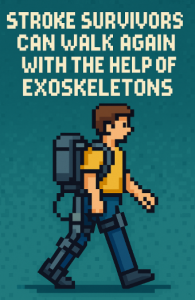
You Can Trick Your Brain into Growing a Sixth Finger
Ever wanted a superpower? Your brain might already have one.
No, seriously. With just a mirror, a rubber finger, and some strategic stroking (not the weird kind, promise), researchers managed to convince people they had six fingers. Not metaphorically—these folks felt the touch, owned the finger, and swore it was part of their body.
And the wildest part? It only took a few tries.
Welcome to the bizarre, mind-bending world of the sixth finger illusion—a phenomenon that’s got neuroscientists, robotics engineers, and low-key Marvel fans all raising an eyebrow.
Let’s dive in.
What Is the Sixth Finger Illusion?
Think of it like the famous rubber hand illusion, but way cooler. Instead of just confusing your brain into thinking a rubber hand is yours, this illusion makes you believe you’ve grown an extra finger—right where none existed before.
Researchers from Tianjin University recently ran a series of experiments with 80 participants. Their mission? See if they could not only create the illusion of a sixth finger but also make it stronger and more independent over time.
In other words: Could your brain learn to adopt a fake finger as its own?
Short answer: Heck yes.
How Did They Pull This Off?
Here’s the setup, simplified:
- You’re sitting at a table with a mirror in front of you.
- Your real left hand is hidden behind the mirror.
- Your right hand—with or without a rubber sixth finger—is visible and reflected in the mirror, mimicking your left hand.
- A researcher strokes both your visible and hidden hands in synchrony.
Here’s where it gets weird: They also stroke empty space where a sixth finger would be. If you’re wearing a rubber finger, they stroke that too. And if this happens just right—BOOM. Your brain starts filling in the blanks.
You feel the touch. You see the finger. Your brain goes, “Yeah, sure. That’s mine now.”
Cue the sixth finger illusion.
So… Why Does This Matter?
It’s not just a fun party trick (though, imagine the Halloween costume potential).
This illusion taps into one of the brain’s most fascinating superpowers: neuroplasticity—its ability to rewire itself based on new experiences. If your brain can adopt a totally new finger just from a bit of visual and tactile trickery, that opens doors for some seriously sci-fi adjacent stuff.
We’re talking:
- Supernumerary robotic fingers (SRFs): Wearable robotic fingers that can help people with disabilities, improve manual labor, or make playing piano way cooler.
- Prosthetics that feel real: Instead of just attaching a limb, we could embed it into someone’s sensory system.
- Virtual reality upgrades: Imagine a gaming glove where your hand literally “feels” like it has claws, tools, or otherworldly appendages.
Basically, if we can hack the body map, we can expand what the human body means.
The Eureka Moments: What the Research Found
Here’s where the study got juicy:
- Where they stroked mattered—a lot. Stroking the outer side of the palm (as opposed to the pinky side) led to a stronger and more independent sixth finger illusion. It’s like the brain said, “Yup, new territory! I’ll claim that.”
- Wearing a rubber finger helped—but not as much as you’d think. It boosted the illusion slightly but wasn’t the main star. Tactile feedback (touch) played a bigger role than visuals alone.
- Repetition is key. The more trials participants did, the stronger and more convincing the illusion became. In fact, people who had the palm-side stroke and wore the rubber finger felt the illusion stabilize after just three sessions.
Yes, your brain can learn to believe in new body parts with just three training runs. Take that, Hogwarts.
Real-Life Sci-Fi: Why This Isn’t Just for the Lab
This research has big implications for everything from rehabilitation to human augmentation. Imagine:
- Stroke survivors learning to control robotic fingers with their minds—and feeling like those fingers belong.
- Factory workers equipped with extra digits to handle more complex tasks with less strain.
- Gamers and VR users experiencing new levels of immersion with appendages that feel real.
Heck, maybe you won’t need to ask your friend to hold the flashlight while you’re working on your car—you’ll just use your sixth finger.
TL;DR: Your Brain Is Way More Flexible Than You Think
This study is more than just a quirky illusion. It’s proof that your brain is always negotiating what’s “you” and what’s not. And with the right combo of visual cues, touch, and repetition, you can literally convince it to rewrite the map of your body.
So next time you drop your phone because your hands are full, just remember—science is working on a sixth finger for that.
Let’s Explore Together! 🚀
What if you could train your brain to accept any new body part? What would you add?
- How do you see this research affecting your life? Would you rock a robotic sixth finger?
- What would you do with an extra finger?
- What’s the weirdest (or coolest) science fact you’ve learned this week?
Drop your thoughts in the comments, share this blog with your most curious friend, and let’s keep the science convo going.
Unlock Science Secrets:
Science is under threat, and your knowledge is your power. This Week in Science offers groundbreaking insights, revolutionary research, and transformative discoveries to arm you with the facts in an increasingly polarized world. Our free weekly newsletter is perfect for educators and science lovers alike. Don’t wait—subscribe now to deepen your understanding and stand with science. If you liked this blog, please share it—your referrals help us keep science accessible to everyone.



